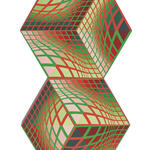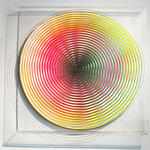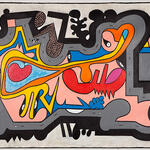Jesús Rafael Soto (Venezuela, 1923 - France, 2005). One of the main representatives of kinetic and optical art. The development of his work began with perceptive kineticism, and then encompassed the entire space, intervening it as a dynamic element through the superimposition of transparent planes. In 1950 he moved to Paris, in France he was influenced by the work of Paul Klee and Piet Mondrian, the latter gave him the idea of "dynamizing neoplasticism". In 1956 he created his first kinetic structures: his kineticism was characterized by integrating in the work the perception of the viewer in displacement before the object. From the 1960s onwards he designed penetrables and works of architectural integration, large-scale traversable works; generating compositions through the articulation of planes formed by trellises of various inclinations. On other occasions, through modulation, he created geometric structures that by means of repetition reach large dimensions, with a prevailing monumental sense of occupation of space.















